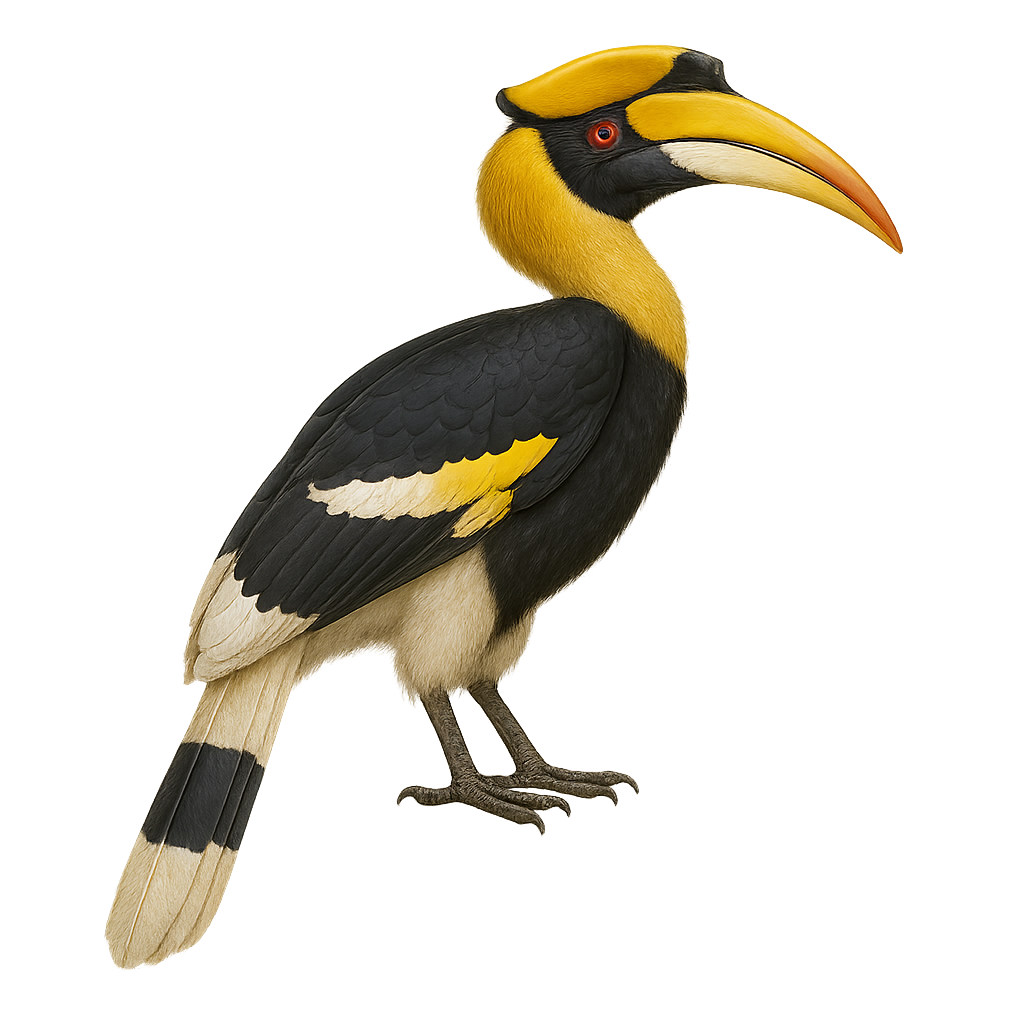Your wildlife photography guide.
Explore the great hornbill in detail, study its behavior, prepare your shots.
Where to observe and photograph the great hornbill in the wild
Learn where and when to spot the great hornbill in the wild, how to identify the species based on distinctive features, and what natural environments it inhabits. The WildlifePhotographer app offers tailored photography tips that reflect the great hornbill’s behavior, helping you capture better wildlife images. Explore the full species profile for key information including description, habitat, active periods, and approach techniques.
Great hornbill
Scientific name: Buceros bicornis

IUCN Status: Vulnerable
Family: BUCEROTIDAE
Group: Birds
Sensitivity to human approach: Very shy
Minimum approach distance: 30 m
Courtship display: February to April
Incubation: 38-40 jours
Hatchings: March to June
Habitat:
humid tropical and gallery forests
Activity period :
Primarily active during the day, with peak activity in the morning and late afternoon.
Identification and description:
The great hornbill (Buceros bicornis) is a large forest bird (95–120 cm long, weighing 2–3.4 kg) known for its massive yellow bill topped by a hollow casque. It inhabits humid tropical and gallery forests from India to Vietnam, at elevations from sea level to 1500 m. Primarily frugivorous, it feeds on figs and various fruits, supplementing its diet with small vertebrates and insects. Monogamous and territorial, pairs remain together year-round. During the breeding season (01.01–31.05), the male and female engage in loud duets and casque-butting displays. After pairing, the female seals herself within a tree cavity and incubates 1–2 eggs for 38–40 days, receiving food through a narrow slit provided by the male.
Recommended lens:
400 mm – adjust based on distance, desired framing (portrait or habitat), and approach conditions.
Photography tips:
To photograph the great hornbill, position yourself in a concealed ground hide at forest edges during dawn or dusk for low-angle light. Use a telephoto lens of ≥400 mm on a monopod or gimbal to reduce shake. Set shutter-priority to 1/2000 s and aperture to f/8 to freeze casque-butting displays while maintaining depth of field. Enable continuous autofocus (AF-C) tracking and shoot in RAW to capture maximum detail and color fidelity.
The WildlifePhotographer App is coming soon!
Be the first to explore the best nature spots, track rutting seasons, log your observations, and observe more wildlife.
Already 1 429 wildlife lovers subscribed worldwide

